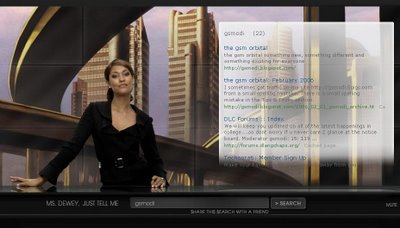Saturday, December 30, 2006
 In the year 2006, ‘YOU’ have been rated as the Time Magazine’s Person of the Year. ‘You’ are the people having a great passion for the World Wide Web. ‘You’ have been searching for an identity on the internet. ‘You’ try to make an impression on the internet. ‘You’ try to leave your mark on the internet. ‘You’ are the people who speak out their hearts on their blogs, post movies for others to watch, try to elaborate the intellectual resources on the internet, or just collaborate with others for social networking.
In the year 2006, ‘YOU’ have been rated as the Time Magazine’s Person of the Year. ‘You’ are the people having a great passion for the World Wide Web. ‘You’ have been searching for an identity on the internet. ‘You’ try to make an impression on the internet. ‘You’ try to leave your mark on the internet. ‘You’ are the people who speak out their hearts on their blogs, post movies for others to watch, try to elaborate the intellectual resources on the internet, or just collaborate with others for social networking.
‘You’ are trying to make yourself heard. The numerous blogs hosted by Blog*Spot, Wordpress or MSN Spaces depict your views and feelings. The YouTube videos you post surpass all cultural divides and give an opportunity to divulge yourself. These technologies give you a new medium to convey your thoughts and make it heard to others.
‘You’ are the people volunteering to create large intellectual wealth on the internet. ‘You’ are the people who write open-source softwares, contribute to the compendium of knowledge Wikipedia, share your bookmarked links with others on del.icio.us; thus, making internet an easy to locate information hub. ‘You’ are narrowing the geographical distances and making a new global community of people. You interact with people with similar interests, find activity partners, make new business contacts or find a date, all on the World Wide Web. The year 2006 saw a huge expansion of the popular social networking sites like MySpace or Orkut. These sites have given a new approach for the people to socialize with others.
‘You’ are narrowing the geographical distances and making a new global community of people. You interact with people with similar interests, find activity partners, make new business contacts or find a date, all on the World Wide Web. The year 2006 saw a huge expansion of the popular social networking sites like MySpace or Orkut. These sites have given a new approach for the people to socialize with others.
Lev Grossman of the Time Magazine states, “This is an opportunity to build a new kind of international understanding, not politician to politician, great man to great man, but citizen to citizen, person to person.” This all has been facilitated with the evolution the World Wide Web, particularly Web2.0.
Web2.0 is the new generation of the internet. It is focused on adding another dimension to the internet by giving it a ‘human’ edge. It has given rise to some really powerful applications that are user-friendly and allow a common human being to introduce himself on the internet. The Web2.0 revolution has transformed websites from being isolated information silos to becoming sources of content and functionality, thus creating a more organized network of websites on the internet.
To read Time Magzine’s complete story, click here.





